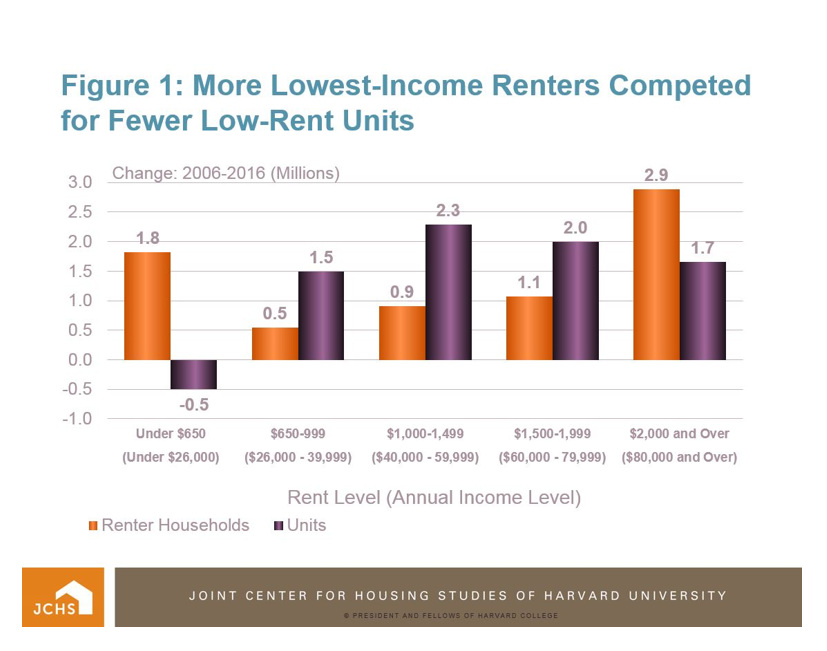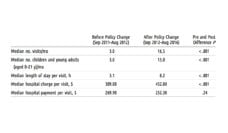Our current rental housing crisis is a story of too little affordable housing and growing demand according to a recent analysis. Low and higher-income households are competing for a shrinking number of rental units, and the lack of supply at both ends is causing people to take up more middle-market rentals. The trend is playing out across most major cities in the US, hitting low-income households the hardest.
The graph above illustrates the change in the number of renter households within five income categories compared to the change in the supply of housing units considered affordable to them. The standard metric of housing affordability assumes that a household should spend 30% of their income on rent.
Starting with the lowest income category (under $26,000) shown in the graph, supply and demand are going in different directions. The number of households increased by 1.8 million, but the number of rental units affordable to these households decreased by 500,000. Faced with this shortage, many of these households are forced to spend more than 30% of their limited income on rent. This means less money for other necessities like food, healthcare, child-care, and transportation.
Rental markets have tightened over the same time period for higher-income households too. Though 1.7 million new units affordable to households earning $80,000 or more were developed, this supply failed to keep pace with the demand of 2.9 million new high-end renters. These renters may respond by competing for lower-priced units, and increased competition coming from both high and low-end renters is reducing the supply available to people actually in the middle-income categories.
The shortage of affordable rental housing has complex causes and implications. Restrictive local zoning, increasing construction and labor cost pressures, and decades of declining federal subsidies for affordable housing development have likely exacerbated the rental problem. Until we address our current affordable housing crisis, other public health initiatives aimed at improving health will continue to fall short.
Databyte via Daniel McCue, Changes in Supply and Demand at Various Segments of the Rental Market: How Do They Match Up? Joint Center for Housing Studies.














